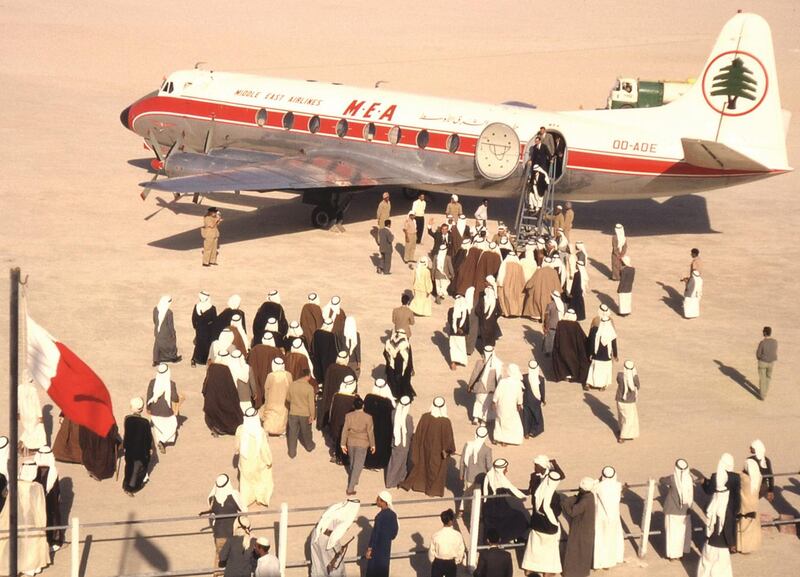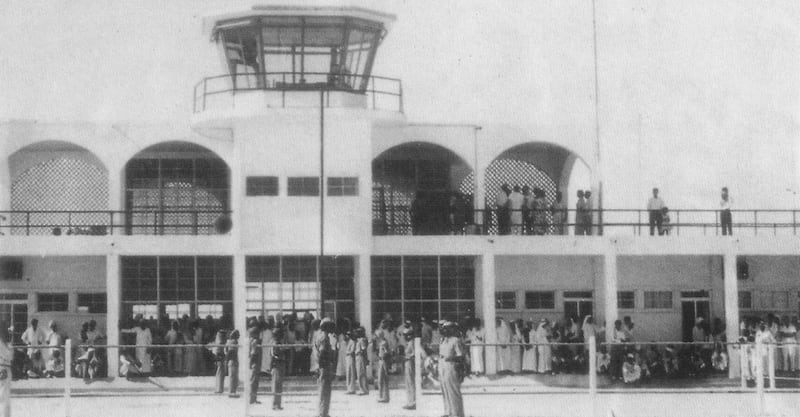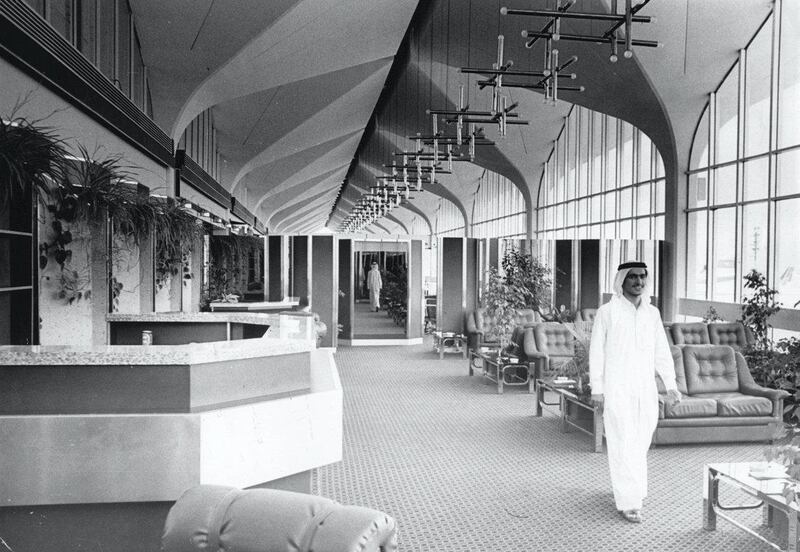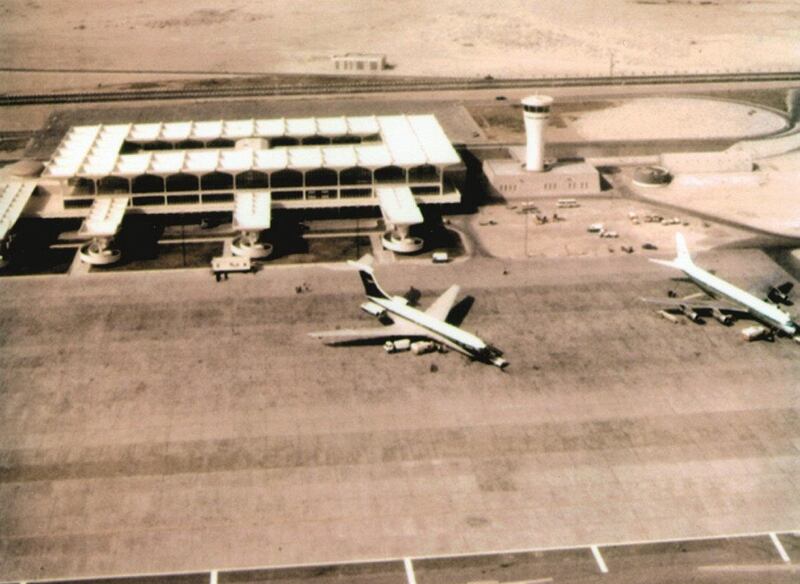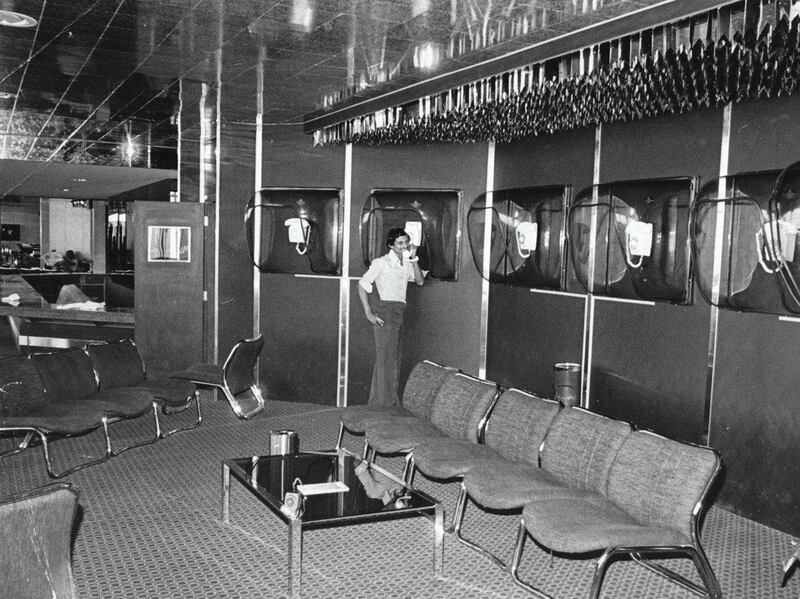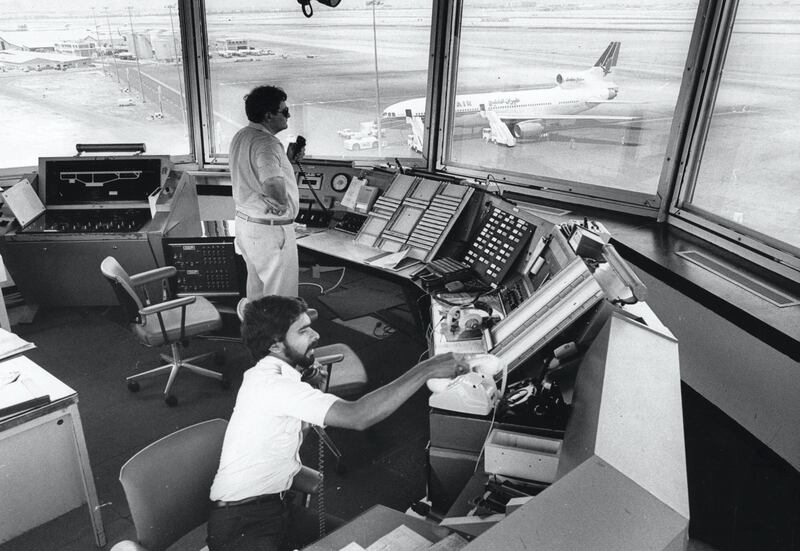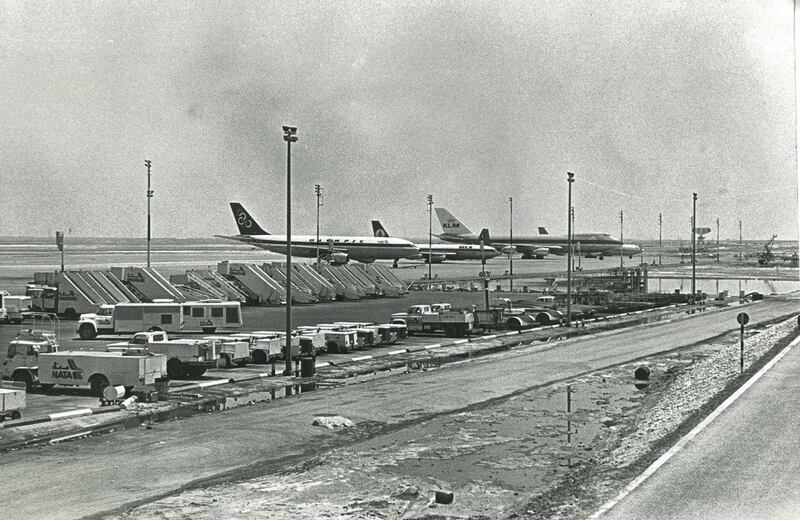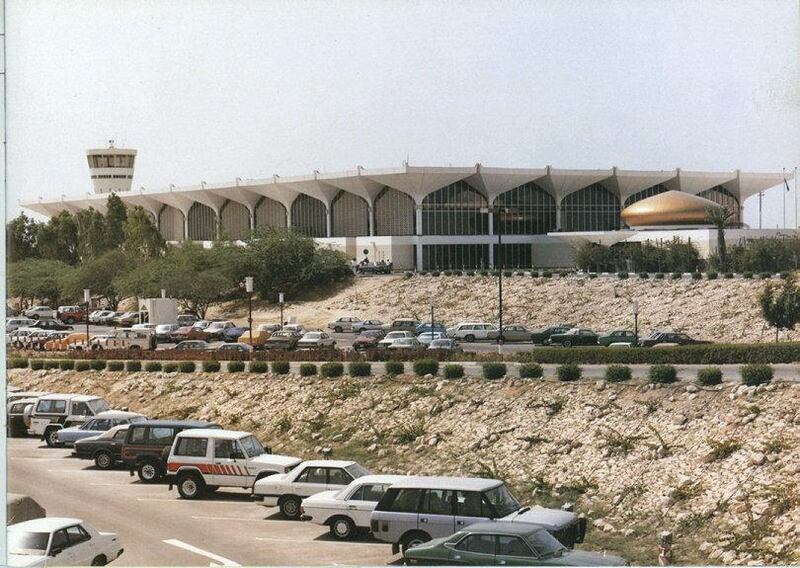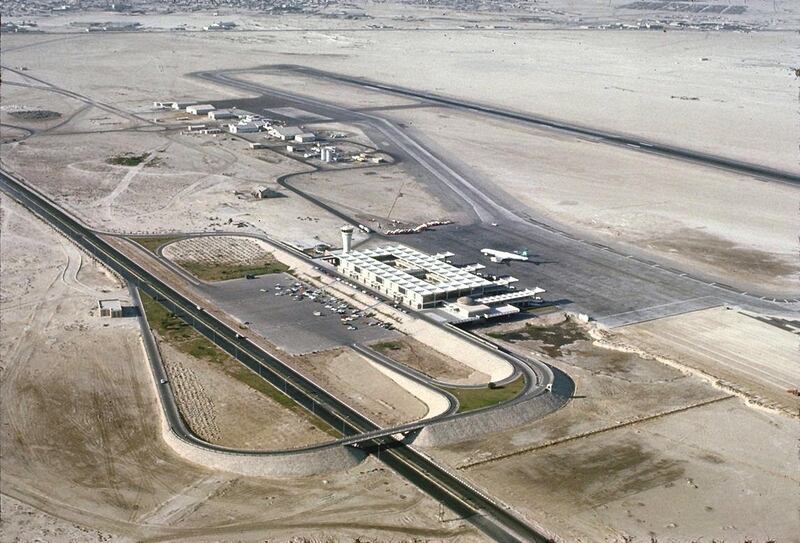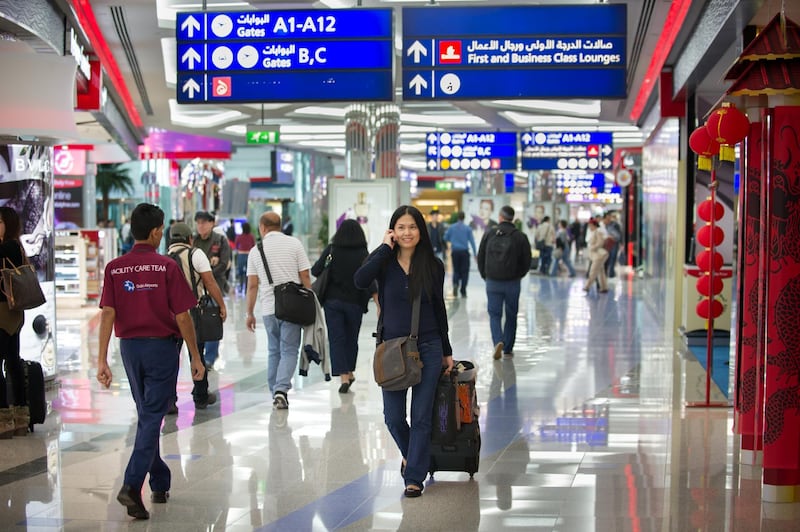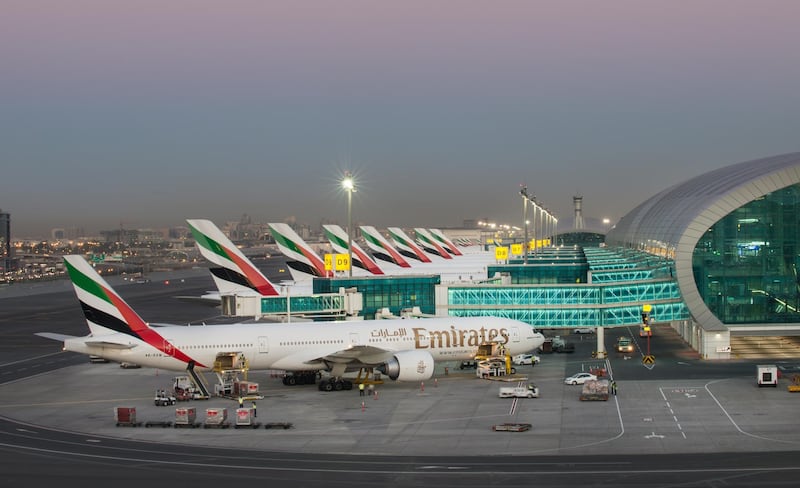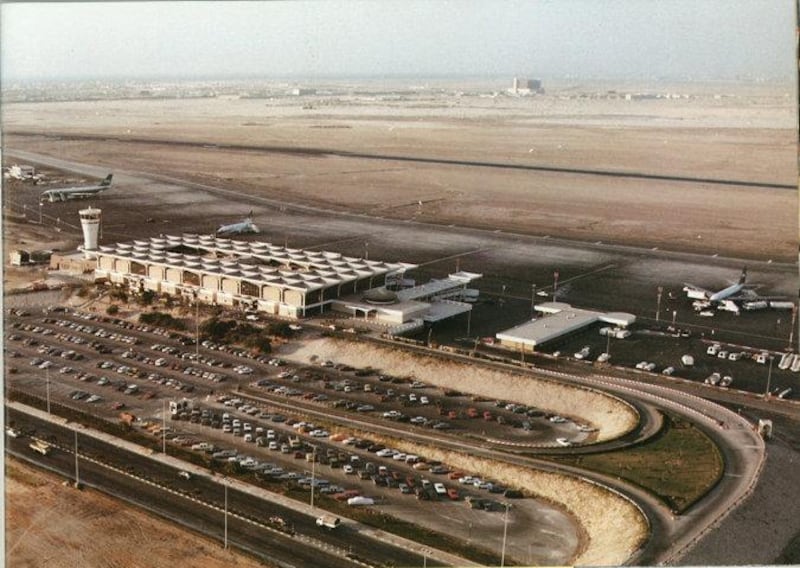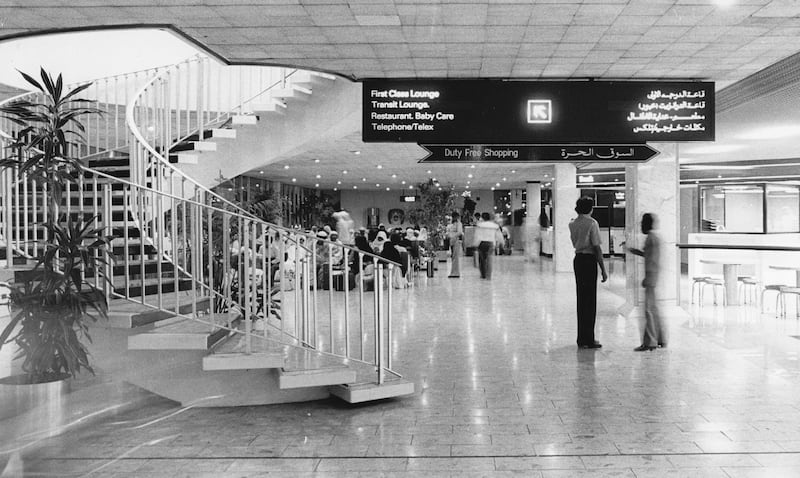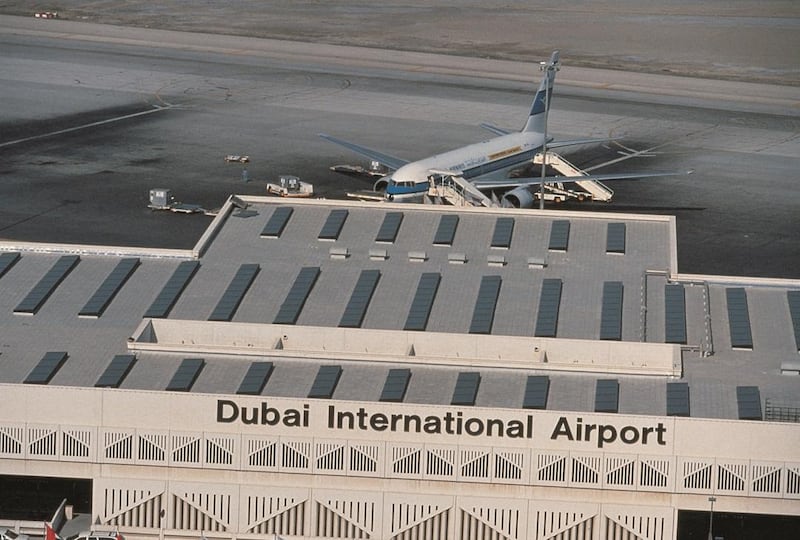In May 1965, Dubai Airport opened its first asphalt runway.
Until then, the five-year-old airport had a 1,800-metre airstrip of compacted sand that could accommodate only aircraft with a 32-passenger capacity.
The asphalt runway, in comparison, stretched for 2,800 metres and allowed larger planes to land. It marked its opening by greeting the first big jets of Middle East Airlines and Kuwait Airways.
It was a historic moment for Dubai, and would be the first of a series of expansions that would transform the airport into one of the world’s busiest.
May is, in fact, a month replete with landmark moments in the history of aviation in Dubai.
In May 1998, Terminal 2 was inaugurated in response to the traffic overwhelming its main terminal. The new wing could host 2.5 million passengers annually.
In May 2008, a topping-out ceremony was created for Terminal 3. The age-old tradition involves placing the final beam of the project. The terminal became operational five months later, with an Emirates airline flight from Jeddah being the first to land on the flagship runway.
In May 2014, Dubai Airport began a series of airstrip refurbishments and upgrades. The project lasted for 80 days, during which time all the airport’s traffic was operated out of one runway. Upgrades included new LED lighting to replace the old tungsten lights as well as new taxiways.
The airport continued making significant upgrades over the next decade, employing technologies such as smart gates to help streamline traffic. On Wednesday this week, the airport revealed plans to upgrade its control systems with technologies powered by artificial intelligence. The technology aims to make the challenging job of an air traffic controller easier by collating crucial radar and flight data in one place.
In 2022, the airport handled 66.1 million passengers. The statistic was a 127 per cent increase when compared with previous year’s numbers, which had been affected by Covid-19 restrictions.
“This time last year, the outlook was nowhere near as bright as it is now … it's been a very reassuring set of numbers to record after what has been the darkest period in aviation history since 1903,” Paul Griffiths, chief executive of Dubai Airports, told The National in February.
Mr Griffiths said full recovery to pre-pandemic levels on a monthly basis could come by the end of this year or the beginning of 2024, if the monthly passenger figures reach 7.5 million.
Dubai Airports is projecting the number of passengers who will pass through the international hub by the end of this year to reach 78 million, as the UAE prepares to host major international events such as the Dubai Airshow and Cop28.


